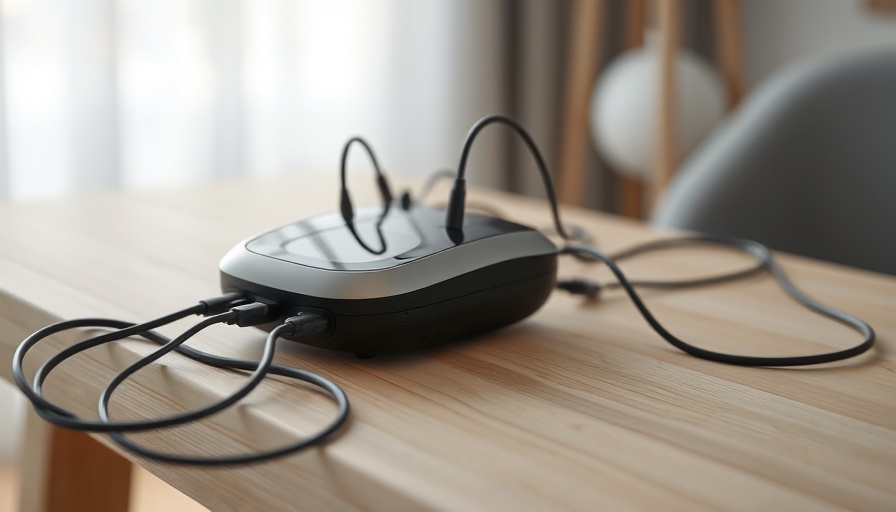
Introduction to Brain Stimulation's Potential
In the quest for improved recovery methods for stroke survivors, recent innovations in brain stimulation technology have emerged as a beacon of hope. A fascinating pilot study from Syracuse University is shedding light on how transcranial direct current stimulation (tDCS) could ease fatigue and enhance attention among post-stroke patients. Published in Frontiers in Human Neuroscience, this groundbreaking research highlights a crucial intersection of neuroscience and rehabilitation, showcasing how innovations can directly impact individuals navigating the complexities of recovery.
The Study: Methodology and Initial Findings
The research involved 10 stroke survivors, averaging 62.8 years old, all coping with post-stroke aphasia—a language disorder stemming from stroke incidents. The participants underwent two sessions of tDCS, with each session separated by several days. Initiated with an attention test monitored through electroencephalography (EEG) and pupil dilation tracking, the study aimed to quantify improvements in attention and manage fatigue levels. Surprisingly, while the participants receiving real tDCS exhibited notable pupil dilation indicative of potential attentional benefits, measurable improvements in actual attention tests were not evident.
Why Pupil Dilation Matters
This intriguing aspect of the study illustrates a novel way of monitoring cognitive responses. The locus coeruleus-norepinephrine (LC-NE) pathway, indicated by pupil dilation, plays a significant role in attention mechanisms. This could potentially serve as a physiological marker for gauging the effectiveness of tDCS in future studies. According to Hannah Rembrandt, a principal investigator in the project, the absence of measurable improvements in attention could stem from the limited number of treatment sessions. Building upon this foundational research, longer and more frequent treatments might yield more pronounced cognitive benefits.
Fatigue Relief: A Validating Outcome
A particularly noteworthy outcome was that those stroke survivors receiving tDCS reported feeling significantly less fatigued after their attention exercises compared to those who had a placebo treatment. This discovery underscores the importance of fatigue management and suggests that optimizing cognitive functions through brain stimulation might lead to broader enhancements in daily living—essential for stroke survivors seeking to reclaim autonomy and improve their quality of life.
The Broader Spectrum: Implications for Health and Wellness
The implications of such therapies extend beyond immediate cognitive benefits. In the sphere of health and wellness, brain stimulation might contribute positively to community health initiatives. By facilitating recovery processes for stroke survivors, these advancements can enhance overall wellness in communities, aligning with public health objectives geared toward higher quality and vitality of life.
Exploring Alternative Medicine Approaches
Naturopathic and alternative medicine practitioners have long advocated for treatments that address the whole person rather than merely symptoms. Naturopathy, for instance, emphasizes lifestyle changes, dietary modifications, and holistic health interventions. Integrating methods like tDCS with traditional naturopathic principles could pioneer new avenues of rehabilitation, offering a comprehensive approach to recovery.
Future Predictions: Trends in Neurotechnology
The future of neurotechnological interventions like tDCS appears promising. As our understanding of the brain's intricate work improves, we may anticipate more personalized treatment plans for stroke survivors and potentially broader applications in mental health, pain management, and enhancing cognitive performance. The growing interest in brain stimulation underscores a shift toward innovation in healthcare, where technological advancements hold the power to transform patient outcomes significantly.
Call to Action: Staying Informed
For those interested in the intersection of health and technology, keeping abreast of developments in brain stimulation therapy can offer insights into its potential benefits in your community. Explore opportunities at local health and wellness centers, and engage with professionals in the field who are exploring these innovative therapies. Understanding how these approaches fit within broader health and wellness paradigms is essential as we work toward optimal recovery and vitality for those affected by stroke.
 Add Row
Add Row  Add
Add 




 Add Row
Add Row  Add
Add 


Write A Comment